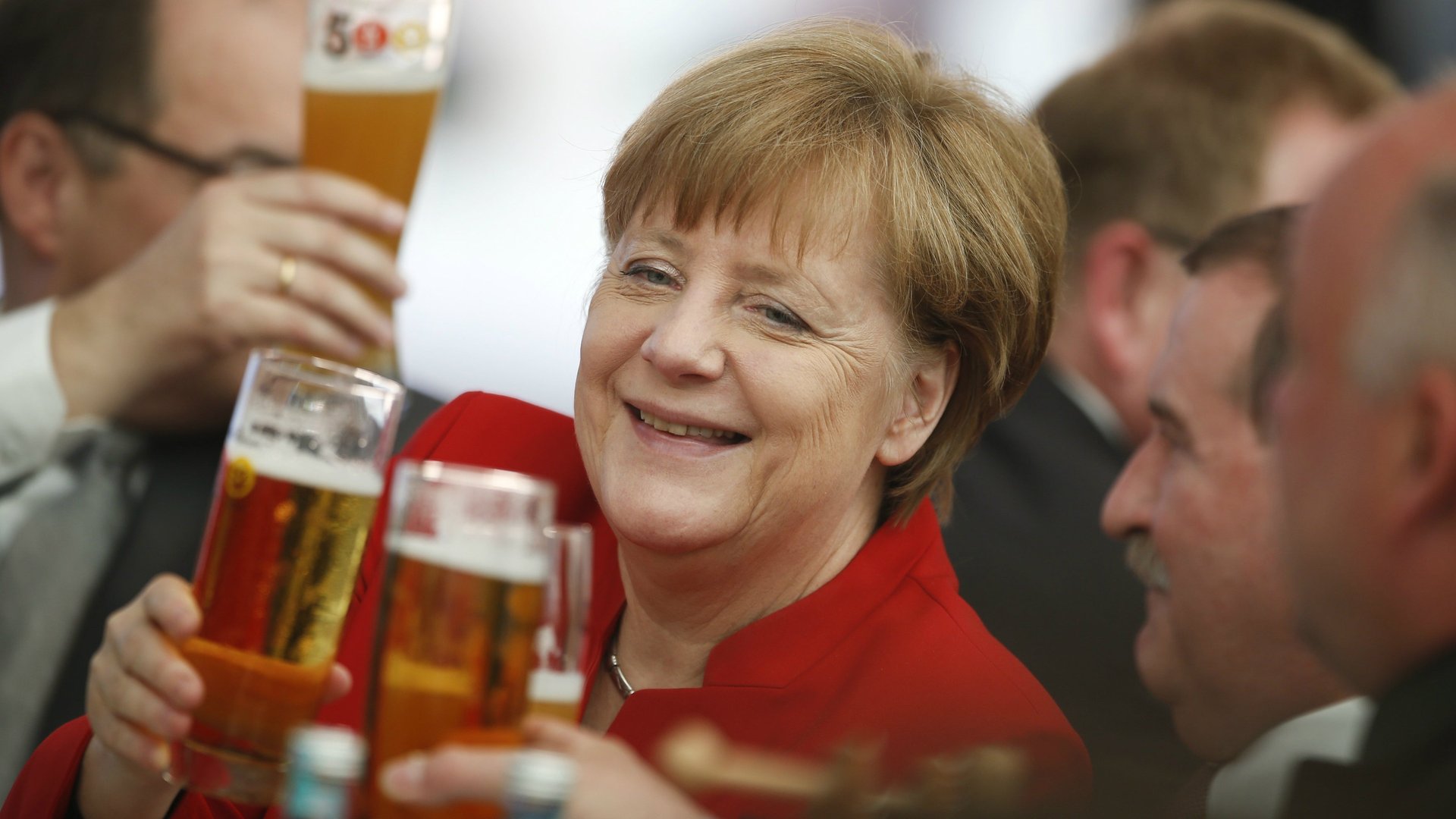Thanks, Germany. You’re making the right economic choice—for you, for Europe, for everybody
In the last three months of 2016, Germany broke character. Its households—long thought of as fanatically thrifty—bought a little more than they usually do. In fact, for once, Germans bought more from abroad than they exported. Perhaps most remarkably, though, the country’s sober, responsible, tightfisted government cranked up the spending too.


In the last three months of 2016, Germany broke character. Its households—long thought of as fanatically thrifty—bought a little more than they usually do. In fact, for once, Germans bought more from abroad than they exported. Perhaps most remarkably, though, the country’s sober, responsible, tightfisted government cranked up the spending too.
Mind you, this is just one quarter. However, even the annual data reveal hints of gathering German demand. For all of 2016, household and government spending, along with investment, powered Germany’s economic expansion. And despite Germany’s enormous trade surplus, net exports dragged on growth.
More quarters like the last one—where Germany’s domestic demand, rather than exports, keeps driving its growth—are vital to correcting the dangerous imbalances in its economic structure. These imbalances have swelled to such proportions that they imperil its neighbors in the euro zone—and, as a result, the global economy as a whole.
Since the early 2000s, the German government has clung to policies that made production cheap, and prevented financial bubbles or inflation from destabilizing its growth. Chief among these was what was called the Hartz reforms, which, in the early 2000s, boosted employment while keeping a lid on wage growth—effectively keeping production cheap at its workers expense. By shifting wealth from workers to Germany’s Mittelstand—its midsized manufacturers—and its government, these policies helped suppress household spending. Its obsession with balancing the budget tamped down even more on domestic demand.
These policies made Germany consume less, and produce more than it naturally would have. With no one at home buying those excess goods that were being produced, or investing those excess savings, German exports and capital flowed abroad.
There, its exports outcompeted those of other countries, and its excess savings were lent out all around Europe, funding a housing and consumption boom across the continent, as we explain in more detail here. And as we all know, that epic bubble eventually burst.
Much of this trend wasn’t because German workers were increasing their output per hour. The cheapness of the goods they made was courtesy of distortions in the German economy that curbed wage growth—meaning Germany wasn’t actually boosting aggregate wealth. And since Germany therefore wasn’t contributing to overall global demand, policies that gave it a higher share of global production necessarily took jobs from workers in other countries.
The policies that kept Germany stable, however, threw the economies of its trade partners and competitors out of whack—so much so that the euro zone looks increasingly at risk of disintegrating, an event which would throw the global economy into chaos.
Item #1 on the agenda of dodging this bullet is German reflation of its economy, through increased spending by both households and the government, and allowing rising inflation, as we recently explained. Those look like they finally might be happening (in addition to increased demand, both wage growth and inflation picked up in 2016). Let’s hope Germany keeps it up.